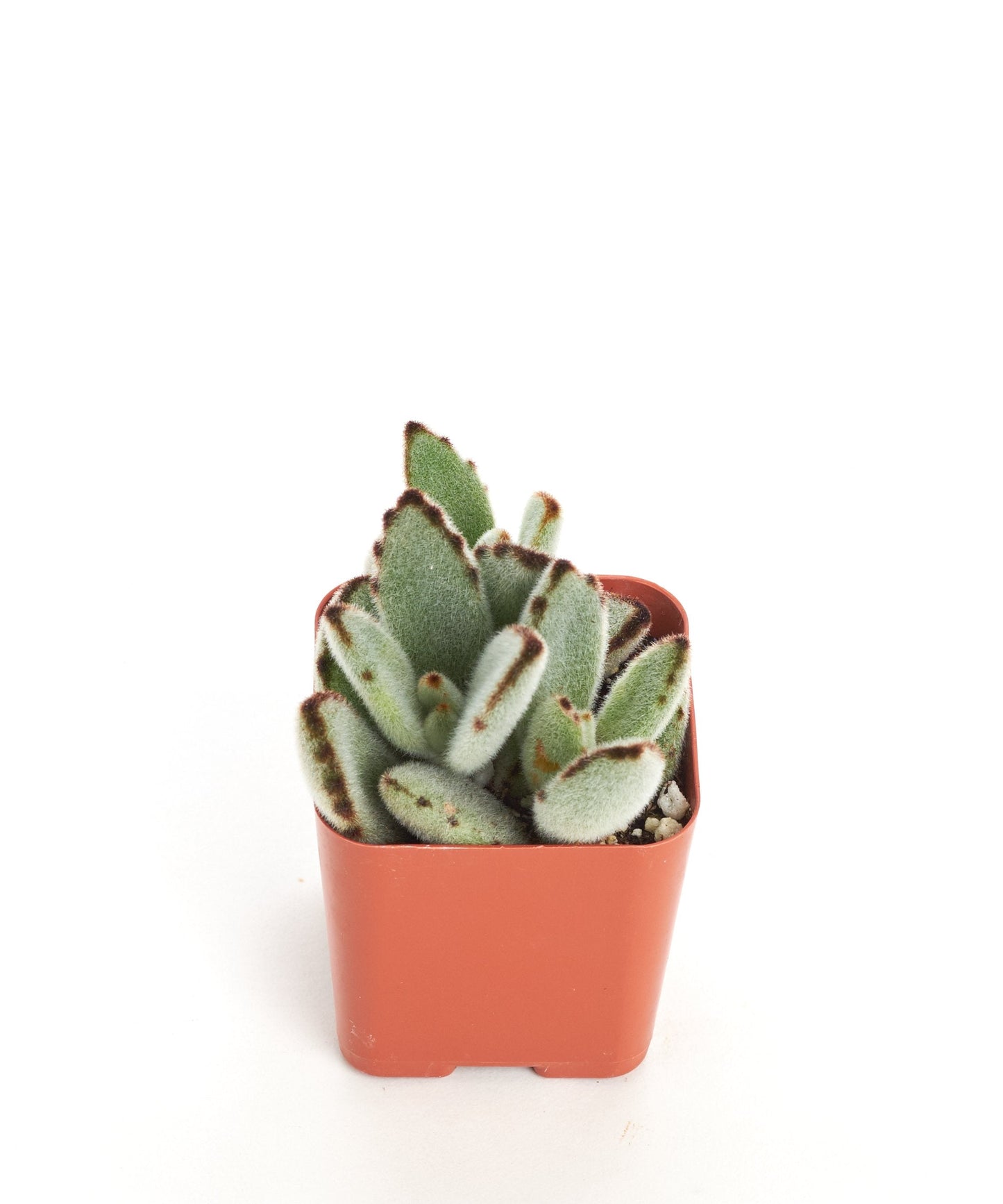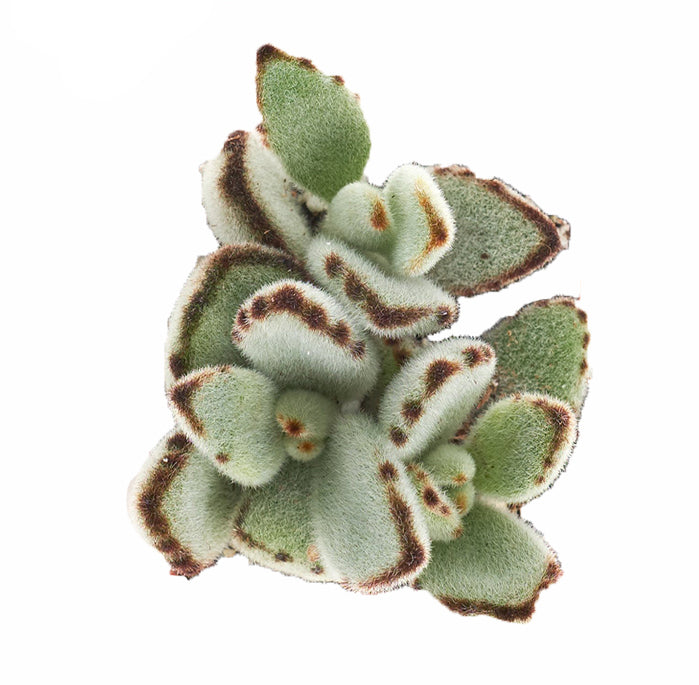Healthy Harvesters
Kalanchoe tomentosa 'Panda Plant'
Kalanchoe tomentosa 'Panda Plant'
Couldn't load pickup availability
Panda Plant
The Panda Plant (Kalanchoe tomentosa) is a distinctive and popular succulent known for its charming appearance and fuzzy, panda-like leaves. This unique succulent variety features small, oval-shaped leaves covered in fine, silvery-white hairs, creating a soft and velvety texture that resembles the fur of a panda. The Panda Plant's leaves are edged in dark brown or rust-colored spots, enhancing its visual appeal. This succulent is highly favored among plant enthusiasts and collectors, and it's a delightful addition to both indoor and outdoor succulent gardens. Recognized for its ease of care and drought tolerance, the Panda Plant is an excellent choice for infusing natural charm and a touch of whimsy into your living spaces or garden. Whether you're an experienced gardener or a novice, the Panda Plant is a versatile and endearing choice to bring a bit of the wild into your plant collection.
Details
Type: Plastic Nursery Pot
Size: Small :: 2 Inch Diameter
Plant Care
Light:
- Provide your Panda Plant with bright, indirect sunlight. It thrives in well-lit conditions.
- Indoors, place it near a sunny window with filtered light, preferably a south or west-facing one.
- Outdoors, ensure it receives sunlight for at least 4-6 hours a day.
Temperature:
- Maintain a warm indoor environment with temperatures between 60-75°F (15-24°C).
- Protect the plant from cold drafts and temperature fluctuations.
Watering:
- Allow the top inch or two of the soil to dry out between waterings. Water thoroughly but less frequently.
- During the growing season (spring and summer), increase watering slightly, but always ensure the soil dries out between waterings.
- Avoid overwatering, as succulents are susceptible to root rot.
Soil:
- Use well-draining succulent or cactus potting mix to ensure proper drainage and prevent waterlogged soil. A mix of potting soil, perlite, and sand works well.
Pot:
- Ensure the pot has drainage holes to prevent water accumulation at the root level. Panda Plants prefer slightly crowded conditions and don't require frequent repotting.
Fertilization:
- Feed your plant with a balanced, water-soluble succulent fertilizer diluted to half strength every 4-6 weeks during the growing season (spring and summer).
- Reduce or eliminate fertilization in the dormant season (fall and winter).
Pests:
- Panda Plants are relatively pest-resistant. However, keep an eye out for common succulent pests like mealybugs or aphids, and treat any infestations promptly with insecticidal soap or neem oil.




